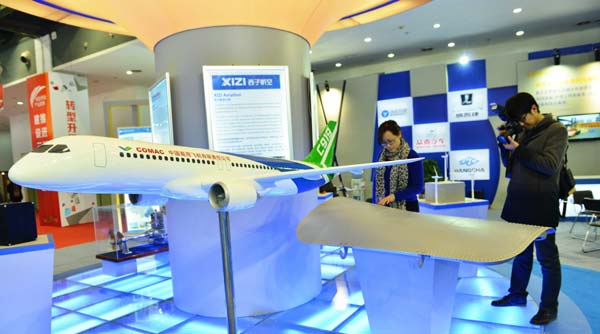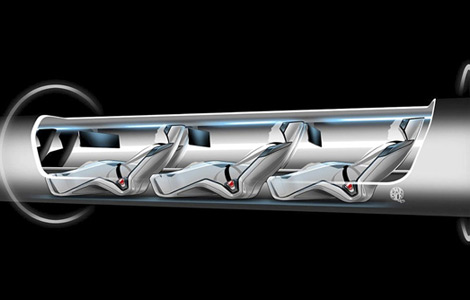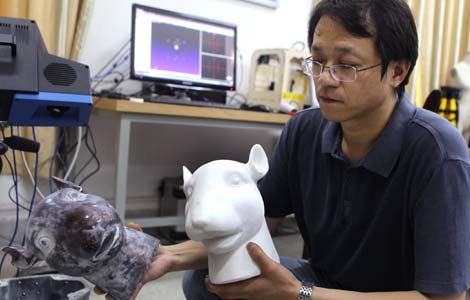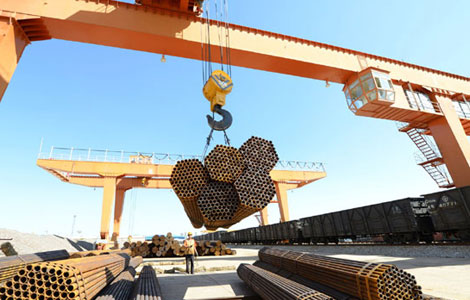3-D printing adds wings to aviation
Updated: 2013-08-13 07:45
By Cheng Yingqi (China Daily)
|
||||||||
The C919 will make its maiden test flight at the end of 2015, according to reports, and Zhang Yanzhong, a member of the Chinese Academy of Engineering and also an advisor to the C919 program, told the China News Service that the aircraft has already attracted 380 orders from overseas.
In addition to its use on the C919, 3-D printing technology has been employed in the design of fighter jets, according to Sun Cong, the designer of the J15 fighter, who said the technique was used in the production of the plane's supporting structure.
"In the field of aviation applications for 3-D printing, China is making synchronous progress with the developed countries," said Lu. "This technology will be widely used in aviation worldwide, and will be a sharp competitive edge in the field," he predicted.
Wang Minghua, a professor at Beijing University of Aeronautics & Astronautics who specializes in material sciences, explained that Chinese research has already had a huge impact on the nascent technology.
"Although scientists in other countries know how to print smaller parts from titanium alloys, we made the technological breakthrough for larger components that can be used in planes," he said.
Wang and his team developed the methods and equipment that allow lasers to print 5-square-meter components made of titanium alloys, expensive materials whose high tensile strength and lightness make them perfect for use in the aviation industry.
 |
|
Visitors examine a model of China's first domestically designed commercial aircraft, COMAC's C919, at an exhibition in Beijing. Scientists used 3-D printing technologies to design components for the plane, such as the example pictured below right. Da Wei / for China Daily |
Reduction of wastage
"Production of aircraft parts faster and cheaper with 3-D printing," according to Wang.
Traditionally, components are made by the process of injection molding, where liquid metal is forced into molds at high pressure and then left to cool. The drawback is that the molds have to be designed and made before the parts can be manufactured, which is costly and wastes materials. "For example, the production of a component might involve the use of three metric tons of steel, but after machining, the part may weigh just 144 kilograms," said Wang.
Printing the parts is a more efficient method, because it avoids the time-consuming process of making and assembling the molds and then refining the cast components into the finished article.
Traditionally, very large components have been made in piecemeal fashion. The parts are assembled and welded into the finished product at the post-production stage - an approach that can have ramifications in terms of strength and durability. "The strength of a welded part is surely not as good as an integral, one-formed printed component," commented Wang.However, he admitted that 3-D printing is not necessarily more efficient in every circumstance. "The larger and the more sophisticated the component, the more competitive advantages 3-D printing has," he said.
The technique also has applications in a wide range of spheres. For example, military experts are pinning their hopes on a "revolution in logistical support" that may be brought about by 3-D printing.
In the future, armies may be able to print medicines and other supplies, even basic foodstuffs, on the battlefield, instead of waiting for deliveries from their supply lines, according to a report authored by two military experts in the Science and Technology Daily.
In addition to the military applications, the technology can also be widely used in high-end manufacturing, including the design of automobiles and home appliances, according to Lu.
"This new 3-D printing is an efficient tool to help improve manufacturing levels and, as such, can play a major role in upgrading China's high-end industries," he said.

 Apartment owner told to dismantle roof-top oasis
Apartment owner told to dismantle roof-top oasis
 Highlights from 2013 China-Russia drill
Highlights from 2013 China-Russia drill
 Billionaire unveils 'Hyperloop' transport system
Billionaire unveils 'Hyperloop' transport system
 Girls should dream big, too
Girls should dream big, too
 'No worry' on wheat imports
'No worry' on wheat imports
 Lenovo shoots for the stars in smartphones
Lenovo shoots for the stars in smartphones
 Questioning China's achievements
Questioning China's achievements
 Students fail army fitness standards
Students fail army fitness standards
Most Viewed
Editor's Picks

|

|

|

|

|

|
Today's Top News
Kennedy effect - symbolic or positive?
'Leftover women' face tough choices in seeking love
Dutch Prince Friso dies after 2012 avalanche
Academy will turn a Hilton into a dorm for Chinese
Brazil puts off bidding on bullet train
US to examine intelligence collection methods
Economists cautious about China's recovery
Consumers losing confidence in Fonterra
US Weekly

|

|





